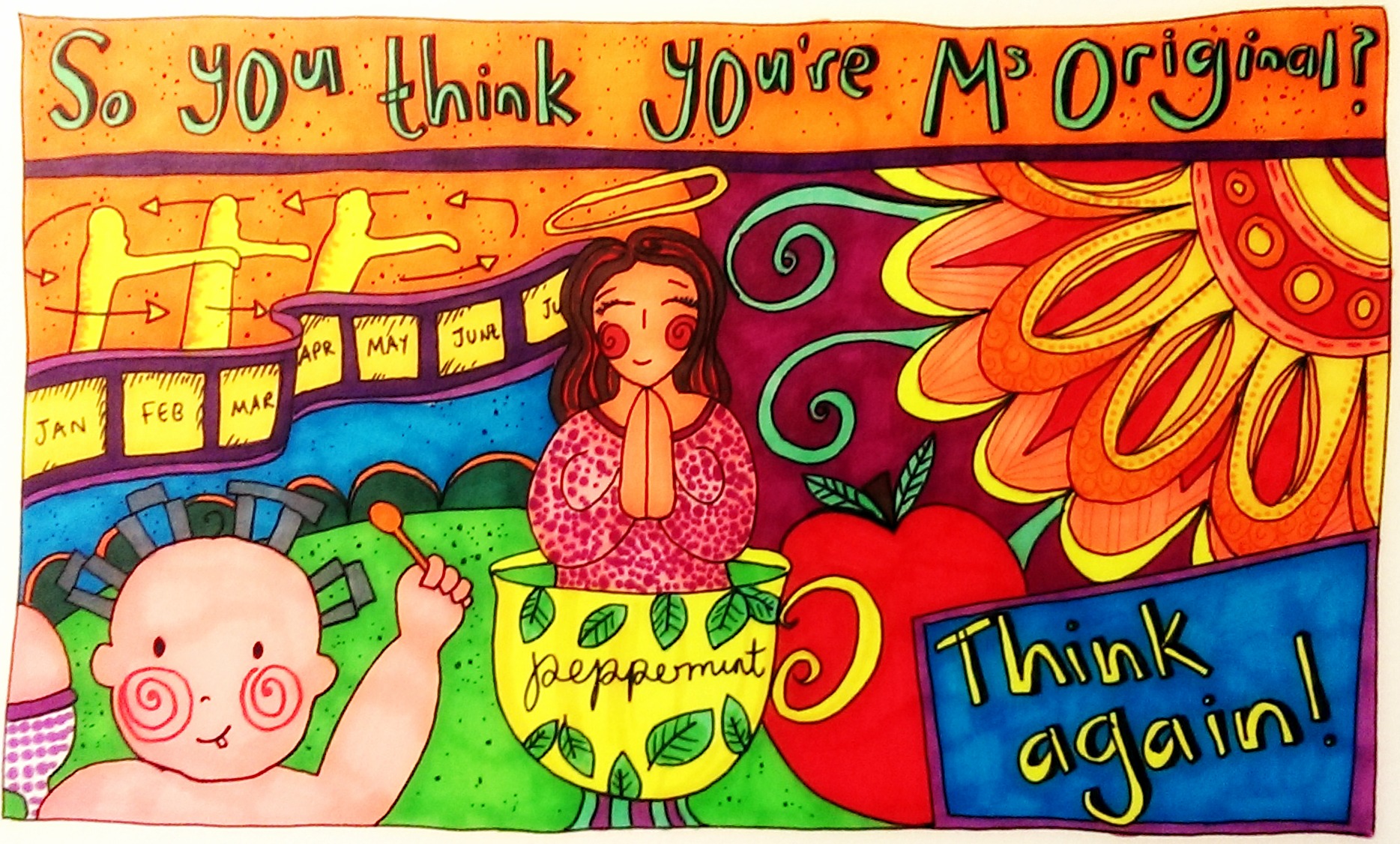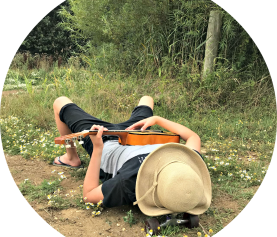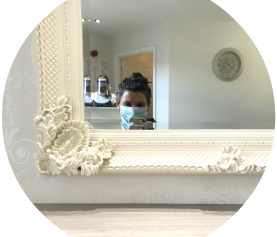Think You’re Mrs Original? Think again …

Then you shuffle downstairs, eye up the fruit bowl where an apple looks back. You size it up. It’s not a Braeburn.
In fact it’s an apple you don’t recognise.
It may be spongy.
Or it may need a bit too much chewing for first thing.
It might make your tum feel all acidic.
You decide it would be best to have a coffee first … Before you know it you are out of the door, apple forgotten, busy in your day, unconsciously munching whatever devilish edible offering happens to pass you by. In the end you give up and decide to begin the diet tomorrow.
Fast forward … It’s the next morning.
You think, “Today is the day! Today I will start the diet.”
And so on.
And so on.
And so on for 525,600 minutes (which is the amount of minutes in one year that we are thinking the same boring old show reel of thoughts and getting the same old show reel of results).
These thinking habits are not limited to eating habits. Our thought patterns hold together everything from how we walk, talk, interact, work and play. They help structure and form our personal identity, allowing us to remain consistently “who we are” (because lets face it! Being consistently ourselves is kind of handy for survival)
Neurological pathways are the road map of our brain and hence have a huge impact on predetermining our lives, our expectations and our behaviour. One major design fault, however, is that most of our neuropathways were set out when we were mere sprogs. Consequently we walk through every day thinking that we are Mr and Mrs Original, but actually we’re more like robots who are following orders from a blueprint created before we even knew how to boil and egg.
This wouldn’t be such an issue if all of our habits were radiant and vibrant and we lived life to our fullest potential. The challenge is that most of us are mere mortals who are hoarding habits that do not serve our highest good and these habits can lead onto health, relationship and myriad other problems.
In the past scientists believed that once created, a neuropathway (where our thoughts habitually flow) was a permanent megalith on our internal landscape. Thankfully with more discoveries around neuroplasticity, it has now been shown that we can indeed change these neuropathways and hence change our behaviours and change our results.
We can begin to design the thought processes that will give us our results and experiences in life.
So how do we do this?
STEP ONE
Become aware that how you perceive yourself and the world are all conditioned responses. Your perceptions of yourself and the world are a little like works of art that once began as awe-inspired swirls of paint, but are now hanging on your mind-wall, unnoticed, unquestioned and quite literally, part of the furniture.
STEP TWO
Play with different ways of thinking and replacement thought habits.
The reality is with the dieting analogy I used above, the first thought wasn’t actually “Today is the day”. The first thought was an underlying habit of waking up and thinking “I’m fat/my body isn’t good enough/I need to be better.” Imagine waking up instead and thinking (powerfully and intentionally) my body is amazing and strong. In fact, it’s so amazing and strong it can HANDLE that acidic apple, goddamit!
A simple tool is to write a powerful mantra on a piece of paper and put it up in your room. These mantras can be interchangeable depending on the thought habit you wish to change. For example, since having my baby boy, my most regular thought upon waking was “urgh, I’m knackered. I haven’t slept. I’m going to be a zombie today.” This didn’t exactly have me leaping out of bed. It didn’t exactly set me up for a day of gorgeouseness. Now when I get up I deliberately make my first thought, “Today is going to be blissfully beautiful.”
STEP THREE
Practise. Look for the evidence in your day that this new thought is true. Find the little miracles. Attach that meaning to things. Build the thought. Since changing my morning thought I can promise you that each day has taken on the sweetest beauty ever. Even when bad stuff has happened I’ve STILL found the loveliness. Now it has almost become second nature and a new thinking habit has formed.
Make your mantra, carve a neuropathway and see how your life changes.




